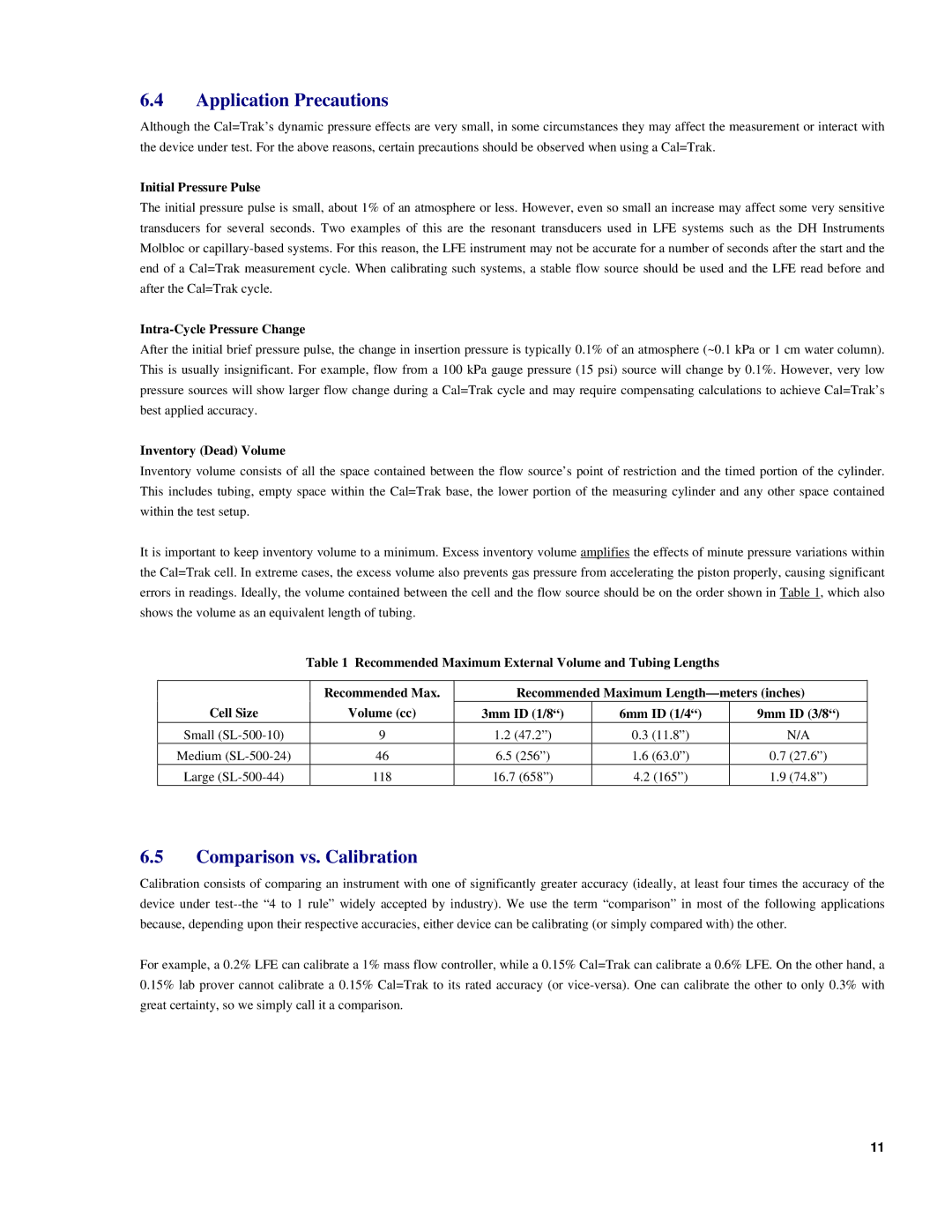6.4Application Precautions
Although the Cal=Trak’s dynamic pressure effects are very small, in some circumstances they may affect the measurement or interact with the device under test. For the above reasons, certain precautions should be observed when using a Cal=Trak.
Initial Pressure Pulse
The initial pressure pulse is small, about 1% of an atmosphere or less. However, even so small an increase may affect some very sensitive transducers for several seconds. Two examples of this are the resonant transducers used in LFE systems such as the DH Instruments Molbloc or
Intra-Cycle Pressure Change
After the initial brief pressure pulse, the change in insertion pressure is typically 0.1% of an atmosphere (~0.1 kPa or 1 cm water column). This is usually insignificant. For example, flow from a 100 kPa gauge pressure (15 psi) source will change by 0.1%. However, very low pressure sources will show larger flow change during a Cal=Trak cycle and may require compensating calculations to achieve Cal=Trak’s best applied accuracy.
Inventory (Dead) Volume
Inventory volume consists of all the space contained between the flow source’s point of restriction and the timed portion of the cylinder. This includes tubing, empty space within the Cal=Trak base, the lower portion of the measuring cylinder and any other space contained within the test setup.
It is important to keep inventory volume to a minimum. Excess inventory volume amplifies the effects of minute pressure variations within the Cal=Trak cell. In extreme cases, the excess volume also prevents gas pressure from accelerating the piston properly, causing significant errors in readings. Ideally, the volume contained between the cell and the flow source should be on the order shown in Table 1, which also shows the volume as an equivalent length of tubing.
Table 1 Recommended Maximum External Volume and Tubing Lengths
| Recommended Max. | Recommended Maximum | ||
Cell Size | Volume (cc) | 3mm ID (1/8“) | 6mm ID (1/4“) | 9mm ID (3/8“) |
Small | 9 | 1.2 (47.2”) | 0.3 (11.8”) | N/A |
Medium | 46 | 6.5 (256”) | 1.6 (63.0”) | 0.7 (27.6”) |
Large | 118 | 16.7 (658”) | 4.2 (165”) | 1.9 (74.8”) |
6.5Comparison vs. Calibration
Calibration consists of comparing an instrument with one of significantly greater accuracy (ideally, at least four times the accuracy of the device under
For example, a 0.2% LFE can calibrate a 1% mass flow controller, while a 0.15% Cal=Trak can calibrate a 0.6% LFE. On the other hand, a 0.15% lab prover cannot calibrate a 0.15% Cal=Trak to its rated accuracy (or
11
